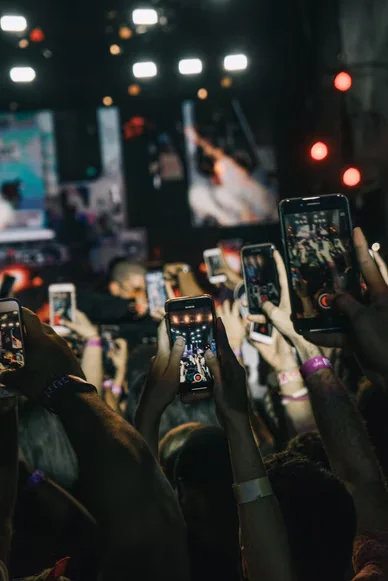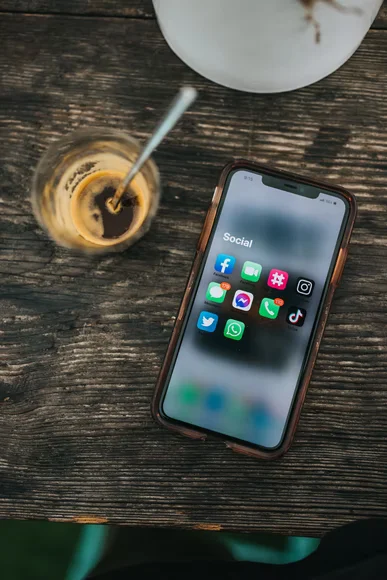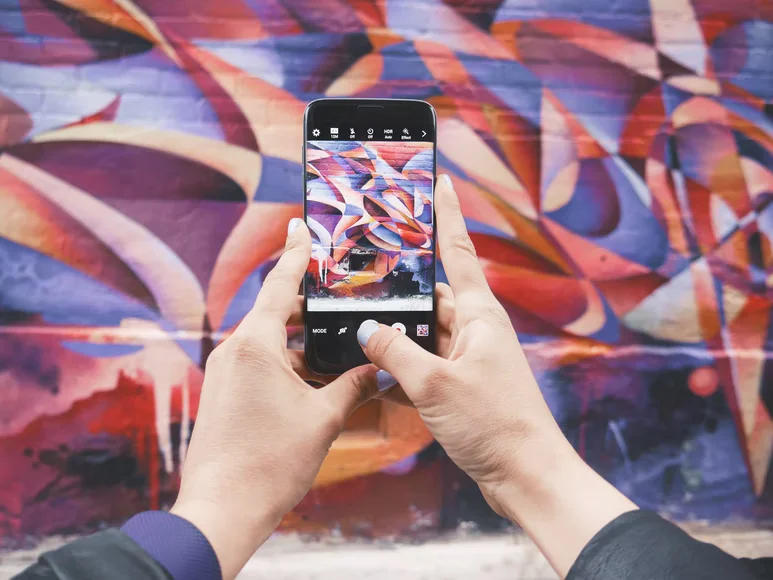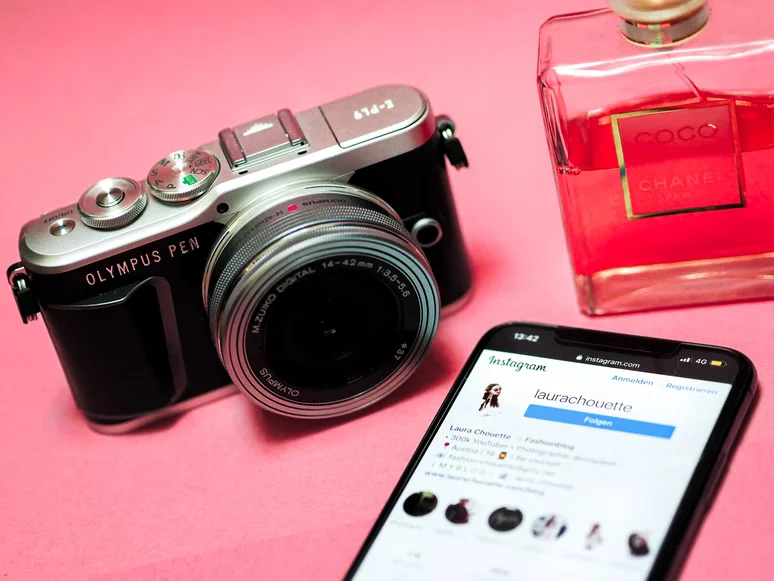Influencer marketing is pretty much at its peak. With so many different social media platforms available, most people spend at least a portion of their free time scrolling their feeds.
Personally, I’m guilty of spending hours on YouTube every day. In fact, I can’t fall asleep without some kind of video quietly playing in the background.
Especially now that Tik Tok is huge, more and more people are becoming small-time influencers. More influencers means more influencer marketing opportunities, and influencer spend is only going up.

Facebook, on the other hand, is slowly dying out as a platform for this (at least with younger audiences), so you’re better off using a Facebook chatbot to automate some of your activity there than investing tons of resources into a full-on marketing campaign.
But how do you select people for your own campaigns from all these opportunities? In this article, we will be talking about the four types of influencers: nano, micro, macro, and mega – as well as how to choose them for your own marketing efforts.
Let’s start from the most niche type of influencers, nano, and work our way up.
Nano-Influencers
In math, the prefix “nano” means one-billionth. Or, very small. And indeed, nano-influencers are determined by how small their following on social media is – usually no more than just a thousand people.
But that doesn’t mean that they’re bad opportunities for influencer marketing. The reality is quite the opposite.
Because their circle is so small, nano-influencers are able to interact and engage with their audience on a much higher level. In fact, they could probably call most of their followers friends.
Anybody could be a nano-influencer. Most of them are simple everyday people that work a regular job, and are just extremely passionate about something, and dedicate part of their free time to a YouTube channel/social media group about that.
The reason behind their following is so small isn’t because they’re bad at what they do – it’s usually because the topic that they’re centered about is very niche. Or they haven’t had the time to grow their channels just yet.

Because of their ability to form much stronger relationships with their audience, nano-influencers are viewed as experts in their niche fields, and their opinions are respected. They also hold the greatest power to “influence” their followers’ buying decisions out of all influencer types.
But, they might be difficult to reach – most of them have never worked with a company before, and therefore are skeptical of marketing offers.
They also value their relationship with their audience more than monetary gains. They also lead their channels because they simply love what they do, and aren’t necessarily trying to make money off it.
So, your best chances of getting a hold of them would be to interact with them on their own channels as a follower first – marketer second.
Micro-Influencers
“Micro” is the next step in the evolution of an influencer. They are defined by having a considerably larger social media following than nano-influencers.
There exists no clear boundary between a nano and micro-influencer, but in general, their social following numbers range between 1,000 to 100,000.
They are just dipping their toes into the life of an influencer, and so even if they are starting to make any money off it, it’s not their full-time job. Since they have realized that they can turn their social channels into a nice little source of extra income, micro-influencers are much more open to partnerships than nano-influencers.
So, they might be easier to reach for your influencer marketing campaign. With that being said, they still value their relationship with their audience over monetary gains and will only partner with companies that they would recommend in real life to their friends.Micro-influencers have a huge following and their influence is growing. It’s no wonder that social media proposals are now being used to win over these targeting audiences with content creators who can craft high quality ads tailored just for them.
Since their audience is considerably bigger, they physically do not have the time to interact with every single person, so their level of engagement is not as high as that of nano-influencers.
Bonus, if they use a leading social media management tool, so they can optimize every post and measure the metrics that matter for your campaign.
I would say that micro-influencers are the golden middle in terms of influencer marketing opportunities as they are open to collaborations (provided your company aligns with what they do), and they still have very strong relationships with their audience.
Macro-Influencers
Macro-influencers have amassed a pretty considerable following in the range of 100,000 – 1,000,000 people.
At this point, they are very serious about their social channels and have likely ditched their nine to five in favor of the influencer lifestyle.
On YouTube, most macro-influencers upload regularly or even on a daily basis. They are also likely monetized, and it’s not uncommon to see a sponsored ad in the beginning or somewhere in the middle of the video.
Macro-influencers are much more eager to accept marketing deals since their social media is their main source of income (or at least a major part of it).

However, at this point, their engagement with the audience starts to drop off quite considerably. It’s not nearly as strong as that of micro and nano-influencers.
Personally, I just skip any sponsored ads since most of the time it’s some random stuff like miracle anti-balding medicine, money-saving mobile apps or the same wallet across tons of channels.
Macro-influencers might be a good choice if you need to market a very general product/service that caters to a large variety of people, but if you have something very niche-specific, it’s very much worth it to go after smaller influencers.
Mega-Influencers
Mega-influencers have over a million subscribers. They are essentially celebrities at that point.
They also make tons of money off their socials, so if you want to include a mega-influencer in your campaigns, prepare a fat stack of cash.
Their prices can be measured in six-digit numbers, especially with multi-million channel owners. However, there is a big disconnect between mega-influencers and their followers.
Sure, the content they produce is probably stellar, but everybody is aware that they are only promoting your product because of a marketing deal and not because they love it so much.
So, despite having the farthest reach out of all influencers, their ability to “influence” their audience’s buying decisions is actually the lowest.
How To Choose Influencers For Your Own Campaigns?
Now that we have established how exactly nano, micro, macro, and mega influencers differ from each other, let’s answer the main question of this article. How do you actually choose influencers for your own campaigns?
First Off, You Need To Pick A Platform
The first step of your influencer marketing campaign is to, of course, select a platform where you will be operating. Which one is the best?
There is no definitive answer to this question as each social media platform offers different benefits and features that may be more relevant for your specific influencer marketing campaign.
However, some key factors to consider when choosing a social media platform include:
-The demographics of the platform’s user base
-The type of content that performs well on the platform
-The features the platform offers that could be useful for your campaign
-The level of engagement the platform generates
Some of the most popular social media platforms for influencer marketing campaigns include Facebook, Instagram, Twitter, YouTube, and TikTok.

However, there are many other platforms that could also be a good fit for your campaign, so it’s important to do your research and determine which platform will work best for you.
Think of your target audience. Developing a “user persona” could be helpful. This persona is the quintessence of your top 5 customers’ traits, including age, needs, wants, gender, location, and, of course, the social media that they spend the most time on.
Facebook is popular among older adults, while Instagram and Snapchat are more popular among younger adults. Twitter is popular among adults of all ages. YouTube is popular among all age groups, while TikTok is popular among younger adults.
People who use Facebook for influencer marketing are typically interested in staying up-to-date on current events, while people who use Instagram for influencer marketing are more likely to be interested in lifestyle and fashion.
People who use Twitter for influencer marketing are more likely to be interested in news and politics, while people who use YouTube for influencer marketing are more likely to be interested in entertainment and lifestyle. People who use TikTok for influencer marketing are more likely to be interested in music and fashion.
Pick The Influencer Type
Now, again, there is no such thing as the best type of influencer for a marketing campaign. There exists a belief that the more followers an influencer has, the more valuable a collaboration with them will be for your business, but it’s not entirely true for reasons I have discussed earlier in the article.
In general, there are a couple of things that you need to keep in mind when picking an influencer type.
Firstly, it’s the type of product/service that you’re offering. Do you have something very niche-specific that only a select circle of people would benefit from purchasing? Then go for smaller-time influencers.

Their stronger audience bonds and greater ability to influence their decisions will help you get a better return on investment for your campaigns.
On the other hand, if it’s a more general product/service that a lot of people would find useful in their everyday life, then it would be logical to tap into the reach of larger influencers. Here, it’s not actually the influencers’ magic ability to recommend things to people would be more important, but just the simple fact that more people will see your product, and more will be interested in trying it out.
Look For Prominent Figures Within Your Niche
Once you have decided which platform you will be using for your influencer marketing campaigns, as well as the type of influencers you will be going for, you can actually start searching for people that you want to collaborate with.

There are different ways to find influential people within your niche. Here are some:
- Using social media platforms such as Twitter, LinkedIn, or Instagram to find users who have a large following in your niche.
- Searching for blogs or articles that have been written by experts in your niche.
- Looking for hashtags that are popular in your niche and identifying the users who are using them the most.
- Finding forums or groups online that are dedicated to your niche and identifying the users who are most active in them.
- Looking for top shared content for a given topic, and looking at its authors; chances are it’s created by an influencer.
- Using tools like BuzzSumo to identify top-performing content and accounts to save a bit of time on manual prospecting.
Reach Out To Your Prospects
Once you have picked a list of potential influencers to work with, it’s time to start reaching out to them.
There are two ways to reach them, and I would recommend you to use both to increase your chances of success.
The first one is to just DM them on the social media that they’re most prominent on. The second one is to send them an email pitch, describing the nature of the collaboration that you’re offering them.
Arguably, the most important part of your pitch is the value proposition. In other words, what’s in it for them and why should they accept your offer?
Here are some examples of such a value proposition:
- A sponsorship;
- An invitation to your affiliate program;
- A sample (or samples) of your product for them to try out, or arrange a user giveaway.
And finally, you should provide your influencers with resources where they can learn more about your business and your end goal, or a link to your booking calendar.
Stay Human!
Influencers (especially smaller-time ones) can be a little bit skeptical about marketing offers coming from a company that they don’t know.
So, once you get to the outreach stage of the whole process, it’s important to ditch that formal feel and instead communicate like two people that share a common passion.
Selecting the right influencers for your influencer marketing campaign can feel daunting. But armed with the right influencer tools and criteria, it can be an easy process.
